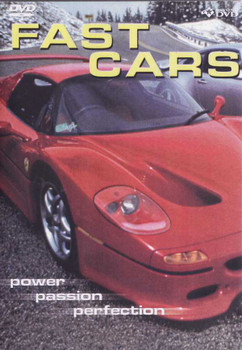Description
Author: Richard Harman, ISBN: 9781854432605, Publised in 2013, Hard cover boxed edition - 2 Books, 800+ pages
Cunningham was a name which cropped-up in my earliest memories of Le Mans and as my interest in motor racing developed, I found the longer distance events for Sports Cars far more enticing that the increasingly shorter Grand Prix races. The Cunningham was just a car and I knew nothing about the man behind their existence until my knowledge expanded through an increasingly extensive library of motor racing books and magazines, of which I could never get enough.
The Briggs Cunningham story gradually emerged and fascinated me, as he was part of the emergence of road racing in his country. The similar development of road racing in Europe had taken place years before my time and was already well-developed when y interest in the sport began. The stories behind the great European races enthralled me, even though they were history, but in America the similar, often troubled beginnings of the sport, happened during my life-time. My thirst for more knowledge of these events was insatiable, but hampered by a severe lack of readily available information. In retrospect, the European press belittled American motor race events and considered them unimportant. Even the major motor races in the USA, some of which pre-dated many great European events, were virtually ignored.
With the advent of a functioning International Sporting organisation, World Championship events for Sports Cars and later Grand Prix races, gradually included the USA. Briggs Cunningham, among others, was eager take on the challenge of the European giants and grasped the opportunity of establishing America as a legitimate competitor. When the very first event of the newly-established World Championship for Sports Cars, in 1953, was won by a Cunningham car, America began to be taken seriously on the World motor racing scene, while the European press begrudgingly included coverage. However, Sebring 1953 was neither a fairy story with a happy-ever-after ending, nor the first time Cunningham had matched himself and his cars against the best that Europe had to offer.
He had witnessed earlier Le Mans 24-Hour races and was aware of the spasmodic appearances of both American drivers and even the occasional American car in previous races. Briggs believed Le Mans to be the ultimate challenge, for himself and for the cars of his country. It has been labelled by some as an obsession for him, but it never became a negative obsession. More accurately, it was a belief that his country could produce a car to match and emerge victorious against the best racing cars in the world. His faith also believed it could be done with American drivers.
The resources he inherited enabled him to pursue his passion for racing and promoting his country. They also enabled him to assemble the best possible people to join him and to provide the facilities for the design and construction of his series of cars. His quest for the ultimate success at Le Mans may have eluded him, but he had laid the foundations for an increased involvement of American cars on the International motor racing scene. He also gave nurture and opportunity to many American drivers who aspired and later achieved universal greatness.
The last Cunningham car did not end his involvement with racing, as his desire for competition never became a self-centred egotistical campaign. When financial constraints curtailed construction of his own cars, he continued to race cars of other manufacturers, although his Corvette cars of 1960 were the only other all-American effort he made at Le Mans. It wasn’t until the time of his retirement from racing that the next attempt by America at Le Mans, from a totally different background, emerged and was ultimately successful. Briggs truly enjoyed and celebrated that.
During his lifetime, he had owned and raced a multitude of cars; some of which he kept. In his retirement, he assembled them all together in a collection near his home in California. He spent his time there, with the cars and his extensive library of literature and memorabilia, welcoming visitors and organised groups of enthusiasts. Events were held there where man of the cars were demonstrated in the huge parking lot of the museum, much to the pleasure of those fortunate enough to have been there.
This work has taken over seven years to complete, with the assistance of numerous people who were there at the time, together with past and current owners of the multitude of cars connected with Cunningham, all of whom have been most forthcoming with information, photographs and recollections. Unprecedented access to the Cunningham family archives, provided by Briggs’ children, in addition to their invaluable support, has enabled this well-overdue recounting of the full Cunningham story, for the first time.






















